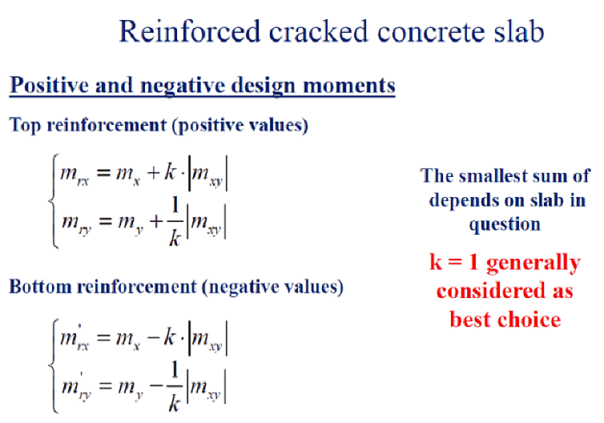Gus14
Civil/Environmental
- Mar 21, 2020
- 194
Quoting the practical yield line design book published by the concrete center, " flat slabs on a rectangular grid of columns are essentially one-way continuous slabs in two directions and as such are analyzed and designed separately in both directions. "
I found their example a bit confusing, as they only studied one direction,
Did they ignore the other direction due to symmetry? as the same moments will occur in the other direction
I studied two models of flat slabs. Model 1, yield line moment results were about 10 percent larger than the finite element results.
Model 1,
In model 2, yield line moment results were about 15 percent larger than the finite element results.
Model 2,
Am I applying the yield line method correctly?
*Sidenotes:
1. Regarding top reinforcement, I understand that a middle strip will attract some of the moments. I ignored it to be more conservative for the column strip. The middle strip reinforcement will be provided appropriately later.
2. I assumed 0.35 * the positive moment along the slab edges because simple support is impossible to achieve. The columns will attract negative moments, as observed in the finite element model.
I found their example a bit confusing, as they only studied one direction,
Did they ignore the other direction due to symmetry? as the same moments will occur in the other direction
I studied two models of flat slabs. Model 1, yield line moment results were about 10 percent larger than the finite element results.
Model 1,
In model 2, yield line moment results were about 15 percent larger than the finite element results.
Model 2,
Am I applying the yield line method correctly?
*Sidenotes:
1. Regarding top reinforcement, I understand that a middle strip will attract some of the moments. I ignored it to be more conservative for the column strip. The middle strip reinforcement will be provided appropriately later.
2. I assumed 0.35 * the positive moment along the slab edges because simple support is impossible to achieve. The columns will attract negative moments, as observed in the finite element model.


![[smile] [smile] [smile]](/data/assets/smilies/smile.gif) .
.